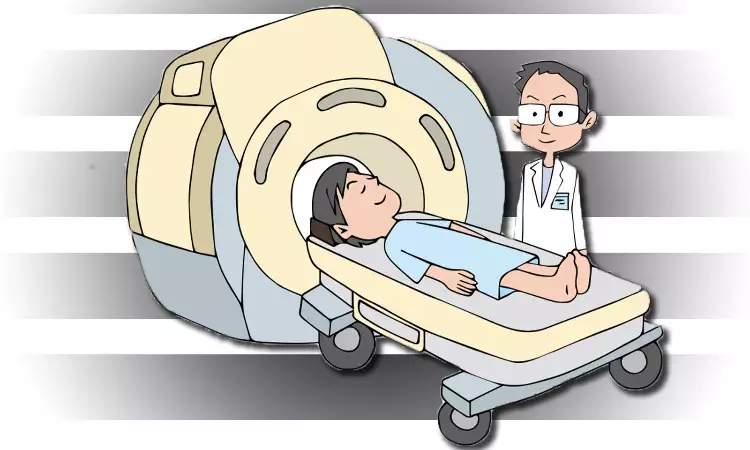- Home
- Medical news & Guidelines
- Anesthesiology
- Cardiology and CTVS
- Critical Care
- Dentistry
- Dermatology
- Diabetes and Endocrinology
- ENT
- Gastroenterology
- Medicine
- Nephrology
- Neurology
- Obstretics-Gynaecology
- Oncology
- Ophthalmology
- Orthopaedics
- Pediatrics-Neonatology
- Psychiatry
- Pulmonology
- Radiology
- Surgery
- Urology
- Laboratory Medicine
- Diet
- Nursing
- Paramedical
- Physiotherapy
- Health news
- Fact Check
- Bone Health Fact Check
- Brain Health Fact Check
- Cancer Related Fact Check
- Child Care Fact Check
- Dental and oral health fact check
- Diabetes and metabolic health fact check
- Diet and Nutrition Fact Check
- Eye and ENT Care Fact Check
- Fitness fact check
- Gut health fact check
- Heart health fact check
- Kidney health fact check
- Medical education fact check
- Men's health fact check
- Respiratory fact check
- Skin and hair care fact check
- Vaccine and Immunization fact check
- Women's health fact check
- AYUSH
- State News
- Andaman and Nicobar Islands
- Andhra Pradesh
- Arunachal Pradesh
- Assam
- Bihar
- Chandigarh
- Chattisgarh
- Dadra and Nagar Haveli
- Daman and Diu
- Delhi
- Goa
- Gujarat
- Haryana
- Himachal Pradesh
- Jammu & Kashmir
- Jharkhand
- Karnataka
- Kerala
- Ladakh
- Lakshadweep
- Madhya Pradesh
- Maharashtra
- Manipur
- Meghalaya
- Mizoram
- Nagaland
- Odisha
- Puducherry
- Punjab
- Rajasthan
- Sikkim
- Tamil Nadu
- Telangana
- Tripura
- Uttar Pradesh
- Uttrakhand
- West Bengal
- Medical Education
- Industry
Early MR scans reveal more people with broken-heart syndrome, says study

In almost ten per cent of myocardial infarctions, no obvious cause in the coronary artery can be found. Some of the patients are diagnosed with broken-heart syndrome, while others are left without a diagnosis. A new study from Karolinska Institutet in Sweden suggests that early magnetic resonance (MR) imaging of the heart can greatly increase the rate of diagnosis. The study has been published in the journal JACC Cardiovascular Imaging.
Myocardial infarction is one of the most common diseases in the West, and is usually caused by a blood clot that blocks the coronary artery on the heart's surface. However, in up to ten per cent of all myocardial infarctions, no obvious cause in the coronary artery is found. Such patients are given the working diagnosis MINOCA (myocardial infarction with non-obstructive coronary arteries), which can subsequently lead to one of several diagnoses.
The majority of the patients are women, many of whom are diagnosed with takotsubo cardiomyopathy (broken-heart syndrome). This is a condition characterised by reduced heart function that is probably related to stress and that presents the same symptoms as a regular heart attack.
"Around 80 to 90 per cent of broken-heart sufferers are women, and the disease is associated with mental stress," says principal investigator Per Tornvall, senior physician and professor at the Department of Clinical Science and Education, Södersjukhuset (Stockholm South General Hospital), Karolinska Institutet. "There also seems to be a link to hypersensitivity towards stress caused by low oestrogen levels. Unfortunately, research on the investigation and treatment of myocardial infarction is often done on men, while female heart disease is less studied."
Cardiovascular magnetic resonance (CMR) is often done when examining patients with MINOCA. CMR approximately ten days after onset can result in a diagnosis in under half the patients, normally takotsubo or myocarditis (inflammation of the heart muscle), according to an earlier study of 150 patients from Karolinska Institutet. The same researchers have now tested a new, more sensitive CMR technique two to four days after onset on a comparable group of 148 patients with a median age of 58. They found that a full 77 per cent of the patients could be given a diagnosis (35 per cent of takotsubo and 17 per cent of myocardial inflammation, compared with 19 and 7 per cent, respectively, in the first study).
"We don't know how much effect the improved CMR technique has, but the results suggest that with early examination more patients can get a correct diagnosis and therefore the right treatment," says Professor Tornvall. "The next step is for us to develop the CMR examination with pharmacological stress of the heart. This will enable us to study the smallest of the blood vessels and hopefully find a cause for the 23 per cent who received no diagnosis."
The study was conducted in close collaboration with the heart-MR department, clinical physiology, at Karolinska University Hospital and was financed by the Swedish Research Council, Region Stockholm and the Swedish Heart and Lung Foundation. Co-authors Peder Sörensson, Magnus Lundin and Martin Ugander are affiliated with Karolinska University Hospital, which has a research agreement with Siemens Healthineers regarding CMR. Jonas Spaak has received personal fees for the past three years from AstraZeneca, Vifor Pharma and Novo Nordisk, all unrelated to the present study.
https://www.sciencedirect.com/science/article/pii/S1936878X21002023?via=ihub
Hina Zahid Joined Medical Dialogue in 2017 with a passion to work as a Reporter. She coordinates with various national and international journals and association and covers all the stories related to Medical guidelines, Medical Journals, rare medical surgeries as well as all the updates in the medical field. Email: editorial@medicaldialogues.in. Contact no. 011-43720751
Dr Kamal Kant Kohli-MBBS, DTCD- a chest specialist with more than 30 years of practice and a flair for writing clinical articles, Dr Kamal Kant Kohli joined Medical Dialogues as a Chief Editor of Medical News. Besides writing articles, as an editor, he proofreads and verifies all the medical content published on Medical Dialogues including those coming from journals, studies,medical conferences,guidelines etc. Email: drkohli@medicaldialogues.in. Contact no. 011-43720751


